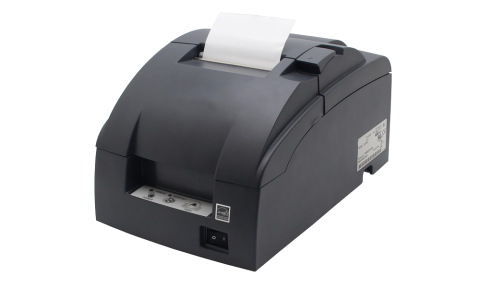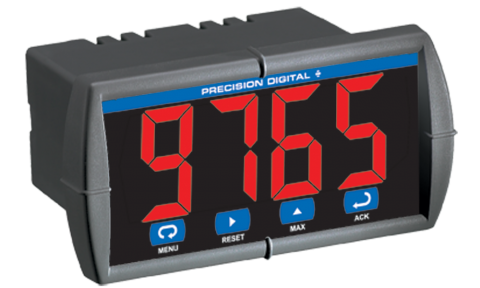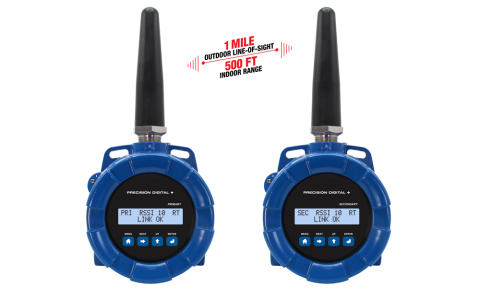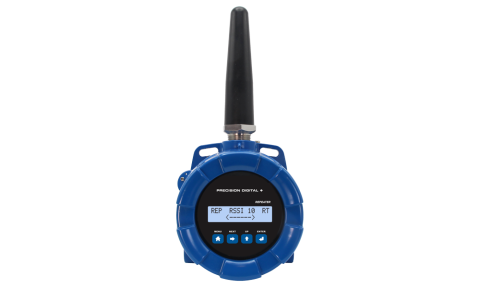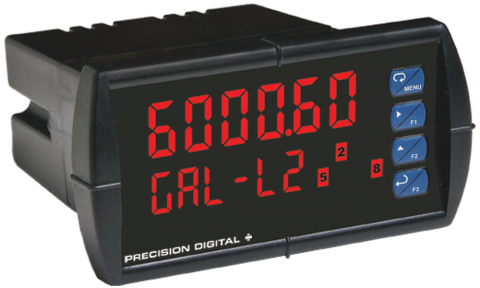Displaying 109 total products (page 1 of 11):
- Plastic sub-panels are designed for the ConsoliDator+ enclosures and provide a convenient way to mount additional items to the base of the enclosure. They can be drilled to accept screws for easy mounting of relays, contactors, securing wiring clips, or installing other internal devices.
The PD920-DP desktop printer simplifies the printing of batch tickets, process variables, and other critical data. It connects directly to ConsoliDator+ PD9000 models using the installed PDA9000-CP printer card and the included DB9M cable. Setting up both the batch controller and ticket printing is easy with the ConsoliDator+’s free programming software, allowing users to choose between automatic and manual printing options. You can specify the batch information to print, accommodating up to 24 text entries, and customize the actions for ticket printing. Additionally, a wall mounting kit is available to optimize your workspace.
- Steel sub-panels are designed for the ConsoliDator+ enclosures and provide a convenient way to mount additional items to the base of the enclosure. They can be drilled to accept screws for easy mounting of relays, contactors, securing wiring clips, or installing other internal devices.
- Steel sub-panels are designed for the ConsoliDator+ enclosures and provide a convenient way to mount additional items to the base of the enclosure. They can be drilled to accept screws for easy mounting of relays, contactors, securing wiring clips, or installing other internal devices.
- Steel sub-panels are designed for the ConsoliDator+ enclosures and provide a convenient way to mount additional items to the base of the enclosure. They can be drilled to accept screws for easy mounting of relays, contactors, securing wiring clips, or installing other internal devices.
The Trident PD765 digital panel meter is one of the most versatile meters on the market and will satisfy a wide variety of process and temperature applications. Housed in an 1/8 DIN enclosure with a NEMA 4X front, the meter can be field programmed to accept process voltage (0-5 V, 1-5 V, etc.) and current (4-20 mA) inputs, 100 Ohm RTDs, and the four most common thermocouples. The display height on the standard Trident meter is 0.56" (14.2 mm) and on the Trident X2 the display height is an astounding 1.2" (30.5 mm). The intensity of the display can be adjusted to compensate for various lighting conditions, including direct sunlight. Programming and setup can be performed with the four front panel pushbuttons, free MeterView software, or using the copy function. Options for the PD765 include 2 relays, a 4-20 mA output, 24 V transmitter power supply, and Modbus® serial communications.
Why you should buy:- Big Display
- 1/8 DIN Panel Meter
- Universal Inputs
- 2 Relays & 4-20 mA Output
The Precision Digital PDW30 provides a simple, straightforward way to get an analog, discrete (digital) or Modbus signal from where you have it to where you need it – without having to run wires! It’s a point-to-point wireless bridge that is virtually plug and play right out of the box.
The PDW30 consists of a primary and a secondary unit and communication between the two is by-directional. That means you can send 4-20 mA, discrete and Modbus signals from the primary unit to the secondary unit and also send completely different 4-20 mA, discrete and Modbus signals from the secondary unit to the primary unit. For instance, the primary unit could send a 4-20 mA signal to the secondary unit corresponding to the level in a tank and the secondary unit could send a 4-20 mA signal to the primary unit to control a valve.
Primary and secondary units are also equipped with four digital I/O that can each be independently programmed as an input or an output. A Loss of Signal warning is also available by connecting devices to the G and LS screw terminals.
To indicate alarm situations, both units can be equipped with an optional, field installable, two relay module. These relays are rated Form A (SPST) 5A.
The specified range between the primary and secondary unit is 1 mile line-of-sight outdoor and 500 feet indoor and repeaters are available to extend the range. A low-cost wireless survey tool, Model PDA10, is available to test the signal strength of your application before you buy. And if the PDW30 system does not work in your application, you can return it for full credit!
In its most basic form, the PDW90 consists of field units (up to 32) that accept 4-20 mA signals and transmits them wirelessly to a base station. The primary advantage of this system is how simple and economical it is to get multiple signals (not just 4-20 mA, also discrete (digital) and Modbus) from where you have them to where you need them – all without having to run wires!
The wireless communication between the field units and the base station is bi-directional. That means you can send 4-20 mA, discrete and Modbus signals from the field units to the base station and also send completely different 4-20 mA, discrete and Modbus signals from the base station to the field units. For instance, the field unit could send a 4-20 mA signal to the base station corresponding to the level in a tank and the base station could send a 4-20 mA sig-nal to the field unit to control a valve.
Field units are also equipped with four digital I/O that can each be independently programmed as an input or an output. A Loss of Signal warning is also available by connecting devices to the G and LS screw terminals.
To indicate alarm situations in the field, the field unit can be equipped with an optional, field installable, two relays module. These relays are rated Form A (SPST) 5A and are controlled by the digital outputs on the base station.
The base stations are available in configurations for 2, 6, or 16 I/O slots for a variety of field installable I/O modules. The available I/O modules are:
- •Dual Analog Input
- •Dual Analog Output
- •Dual Relay Output
- •Four Digital I/O
The specified range between the base station and field units is 1 mile line-of-sight outdoor and 500 feet indoor and repeaters are available to extend the range. A low-cost wireless survey tool, Model PDA10, is available to test the signal strength of your application before you buy. And if the PDW90 system does not work in your application, you can return it for full credit!
PDWR wireless signal repeaters are used to improve the connectivity in PDW30 point to point and PDW90 point to multi-point wireless systems. They will generally increase signal range of the system by another 1 mile line-of-sight or 500 feet indoor.
The repeaters are simple to install as they only require power and a network ID. Any PDW wireless units in range of the repeater with the same network ID will retransmit through it, thus increasing signal strength.
PDWR repeaters can be used to broadcast over very long distances or around permanent obstacles.
The PDWR repeaters are available in either aluminum or stainless steel NEMA 4X, IP68 enclosures and these enclosures contain plenty of room for field wiring connections.
The PD6000 is a member of the ProVu series of 1/8 DIN digital panel meters that accepts a process current (4-20 mA) or process voltage (0-5V, 1-5V, etc.) signal. It displays that signal on a dual-line, 6-digit display that is available with optional Sunbright® sunlight readable LEDs. Like all ProVu meters, the PD6000 includes UL / C-UL listing and CE marking, a NEMA 4X front, and AC or DC power options. ProVu meters can be equipped with up to four internal relays, a 4-20 mA output and Modbus® RTU serial communications. The PD6000 includes a 24 VDC power supply to drive the transmitter and can be programmed via the front panel pushbuttons or free MeterView® Pro software.
Why you should buy:- Dual Line Display
- Pump Alternation
- USB Programming
- 4 Relays & 4-20 mA Output



